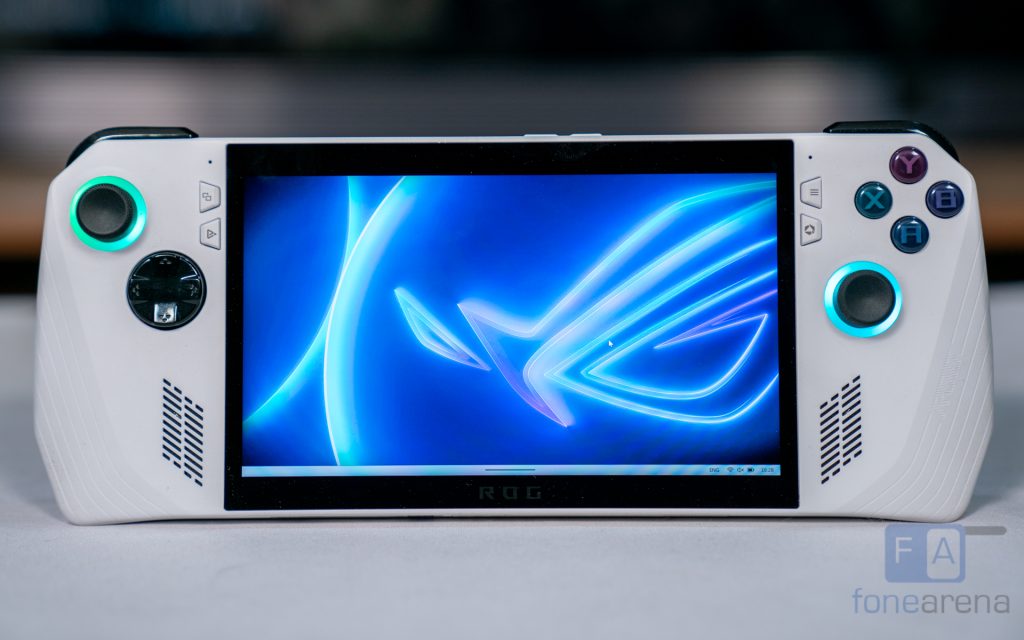
In the last few decades, video games have evolved from simple titles such as Pong to complex multiplayer titles such as Bethesda’s latest title “Starfield”. The platforms we play these games on have also evolved from arcade machines to home consoles and PCs. And now, the PC gaming platform is getting a significant upgrade as handheld consoles have become a possibility.
Among the first to enter this new market is ASUS, who launched the ROG Ally a couple of months ago. The device is now available for purchase in India and we got a chance to review it. Read on to see how the ROG Ally fares as a portable handheld gaming console.
Design and Build

For a handheld console, the design and ergonomics are quite important and thankfully, the ROG Ally does not disappoint. The device sports a classic handheld design where there is a display upfront and a split-up controller attached to either side. The body is made out of plastic that feels good, while the display is protected by Gorilla Glass Victus and Gorilla Glass DXC.
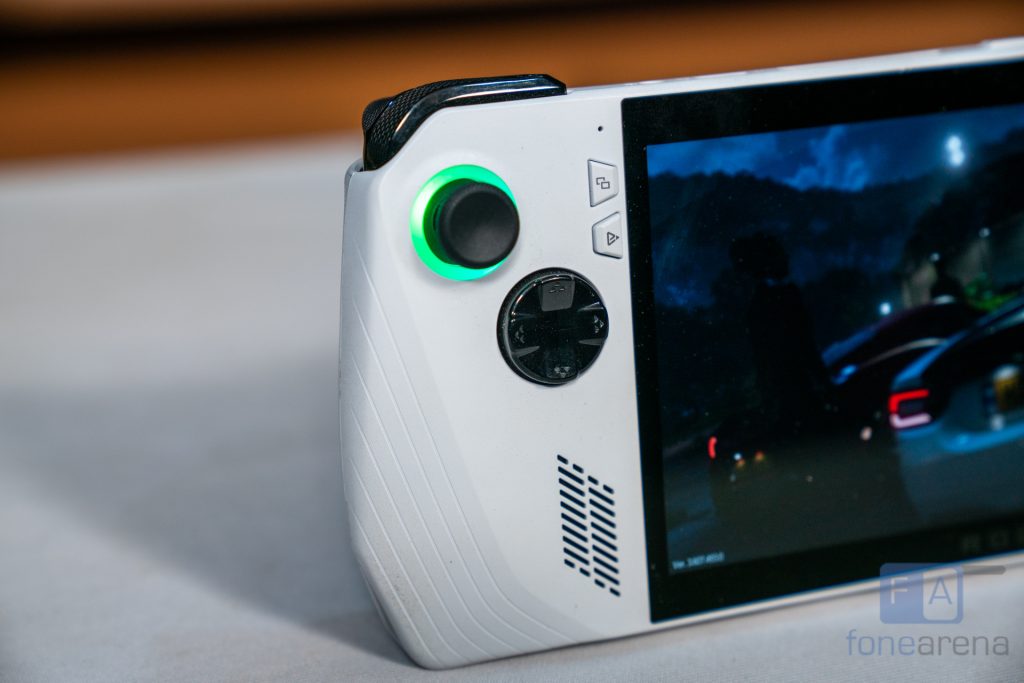
The ROG Ally uses an Xbox-style controller layout with non-symmetrical placements for the joysticks, D-pad on the left side and ABXY buttons on the left side. There are a set of 2 triggers on each side, of which one is a button and the other uses a hall-effect sensor for analogue values. ASUS also added a third trigger in the back, which is neat!
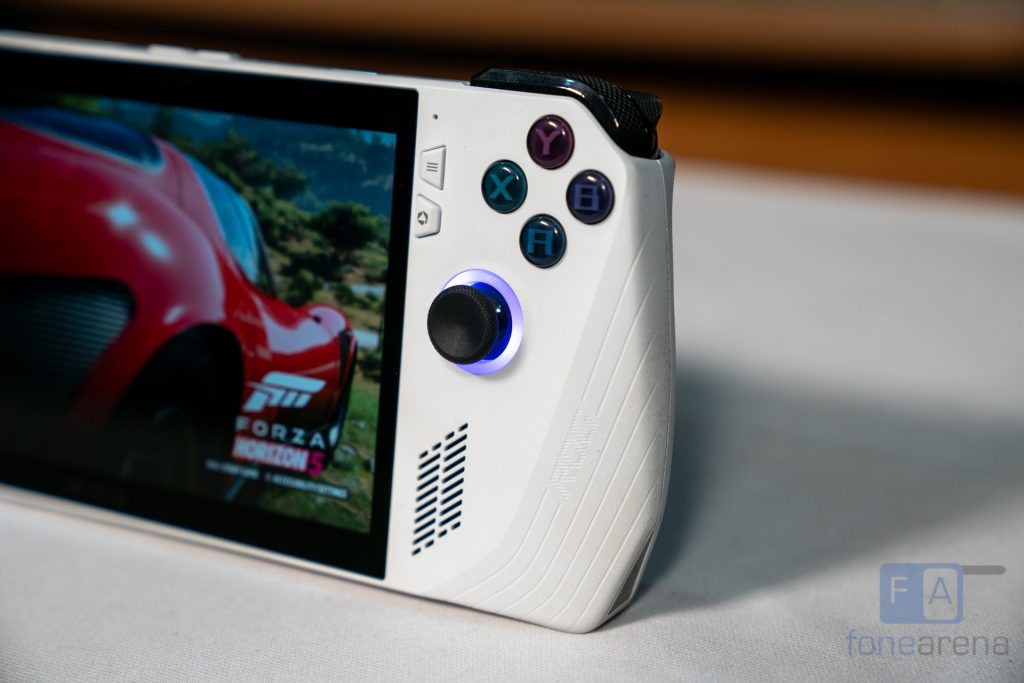
All of the ports and buttons are on the top edge, including the USB Type-C port. This allows the ROG Ally to be used while charging and sitting on a table. Quite convenient in a pinch.
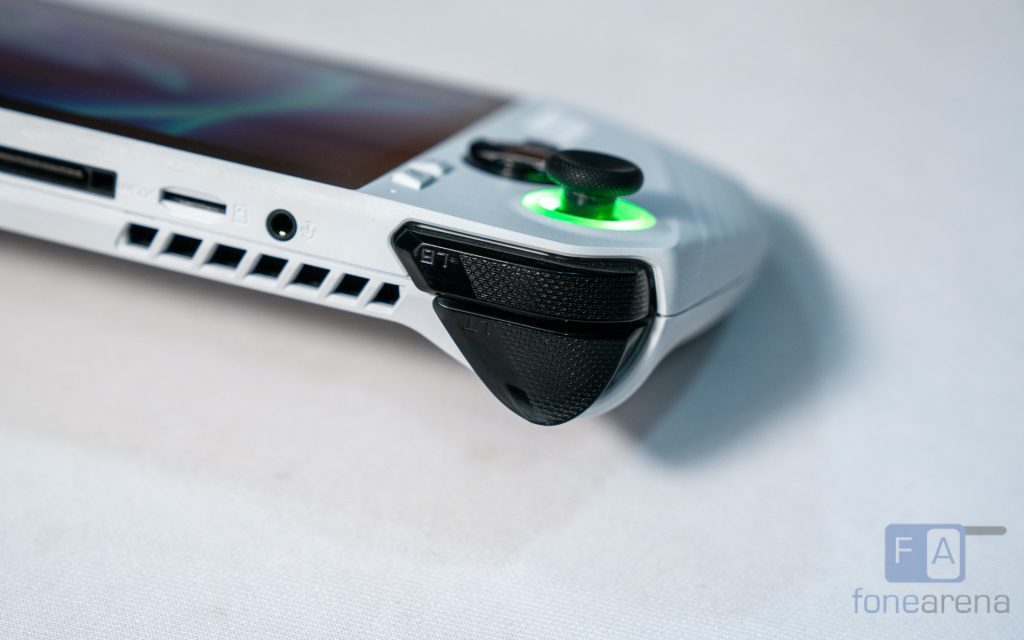
The Ally weighs about 608gms, so it is pretty lightweight to carry and it doesn’t become heavy during long gaming sessions. The ergonomics though, are just alright.

There is a bit of a curve where the hand grips the device, but its not very comfortable. After a couple of hours, you can feel a bit of strain. The triggers on the back take some time to get used to too.
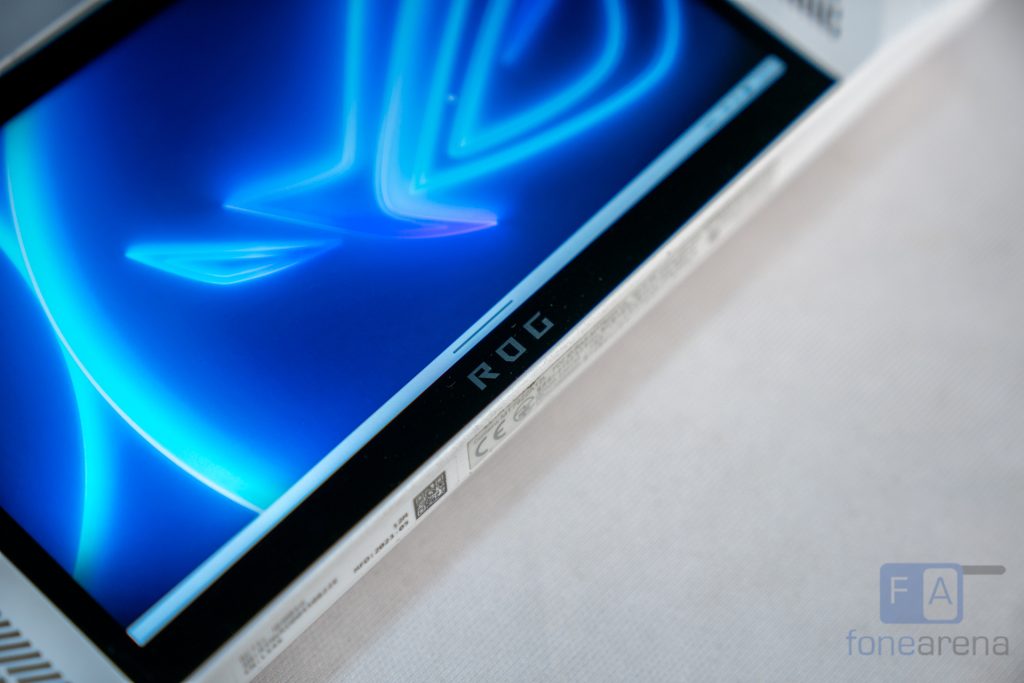
Talking about the design itself, ASUS has elected to go for a cleaner look for the ROG Ally instead of a heavy gamer-aesthetic. The exterior is white all over and the only RGB lights present are under the joysticks. There is also a really cool reflective strip that goes across the back with some ROG branding on it. I believe ASUS is trying to reach out to a wider market with this design and personally, I like it.
Display and Sound

ASUS did a great job with the display on the ROG Ally. It has a 7-inch 1080p LCD panel with a max refresh rate of 120Hz and response time of 7ms. The panel can reach a peak brightness of 500 nits and it supports 100% of the sRGB colour space. The panel also supports AMD FreeSync Premium, which is awesome for a handheld device.
Compared to Valve’s Steamdeck, the ROG Ally’s display is much better both for gaming and content consumption. It has a higher resolution and faster refresh rate. The 500 nits peak brightness also contributes to a good gaming experience when playing outdoors. Colours look good and the contrast levels are adequate. An OLED panel would have been great, but the LCD panel is fine too.
The display is touch enabled, and it supports 10-point multi-touch. Having a touch display as an input does make it easier to navigate Windows sometimes. However it also makes things a bit awkward as you are using touch on Windows on a relatively small display.
The inclusion of FreeSync Premium is perfect as it eliminates screen tearing in scenarios where the Ally can’t keep the framerate up. The gaming experience is a lot smoother, even in harder-to-run AAA titles.
Performance
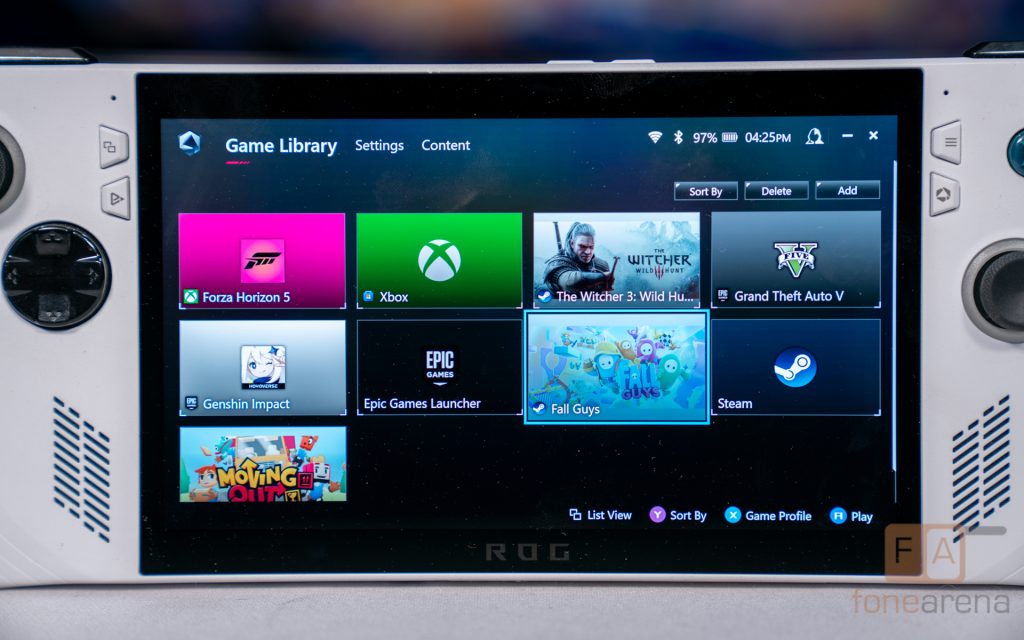
Enabling this form factor for gaming is AMD’s newest Z1 Extreme Processor, which is specifically designed for handheld gaming. It is an 8-core/16-thread processor that can boost up to 5.1GHz and has a configurable TDP of 9-30W. It comes with integrated graphics that consists of 12 RDNA 3 cores too.
In my opinion, the Z1 Extreme is the difference maker for the ROG Ally. It offers impressive performance in such a small package that was previously just not possible. In the past, handheld gaming was limited to simpler games due to the capabilities of the graphics processor. However, the RDNA 3 GPU inside the AMD Z1 Extreme is more than enough to play AAA titles at 60fps, provided you lower the graphics quality.
I tested the ROG Ally with a couple of AAA titles such as Forza Horizon 5, GTA V and Witcher 3. I also tested it with lighter titles such as Genshin Impact, Among Us and Fall Guys. In all of these titles, I was impressed by the performance. Here are some benchmarks with the device set into Performance Mode:
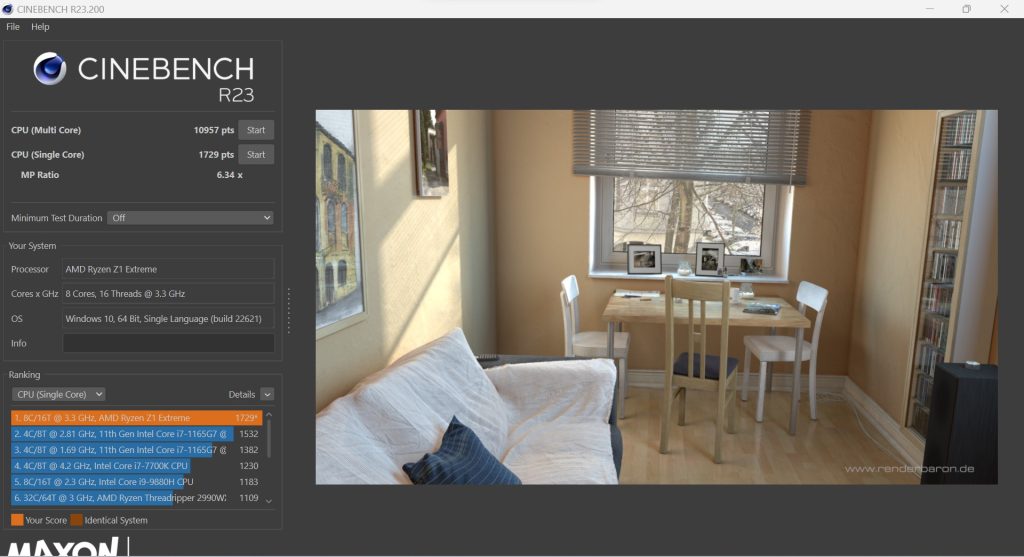

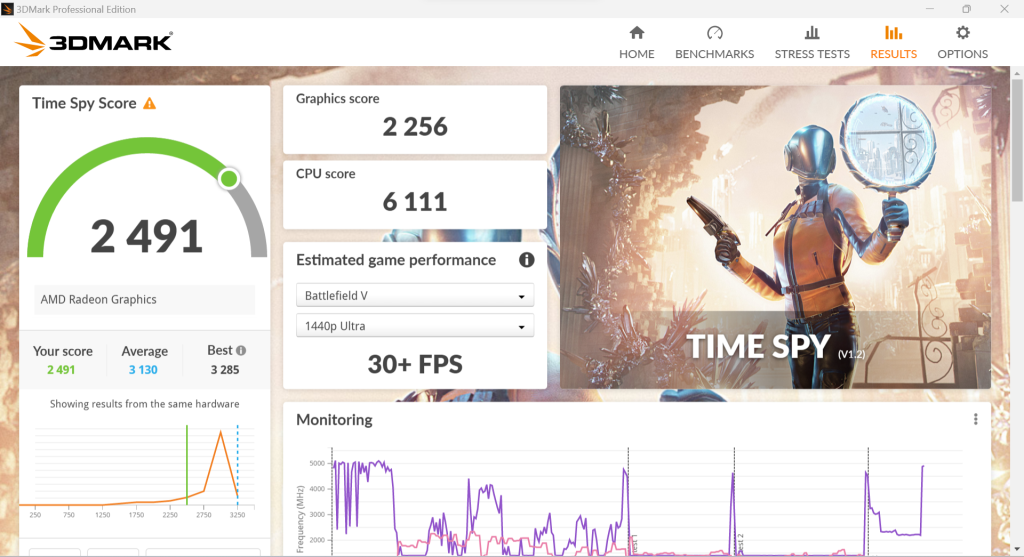
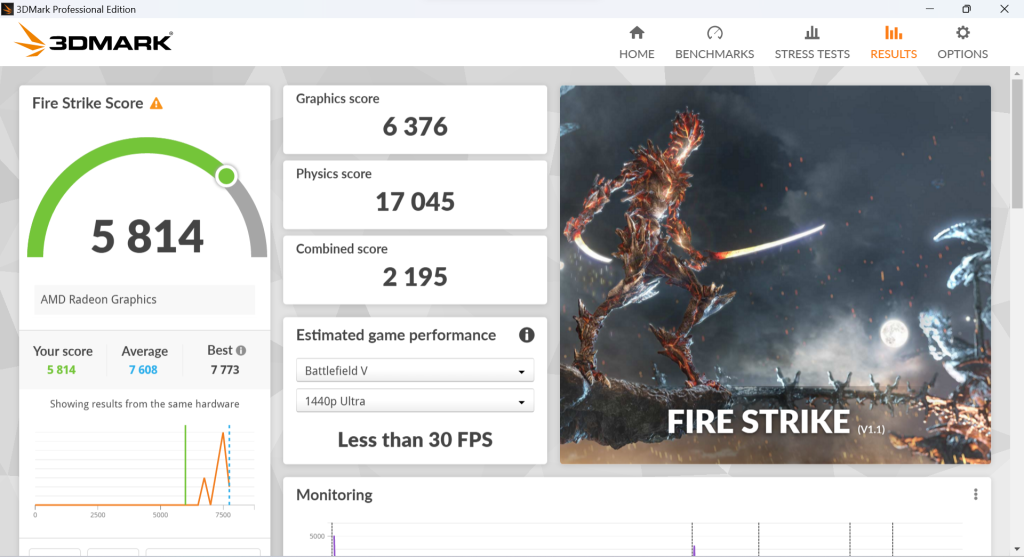
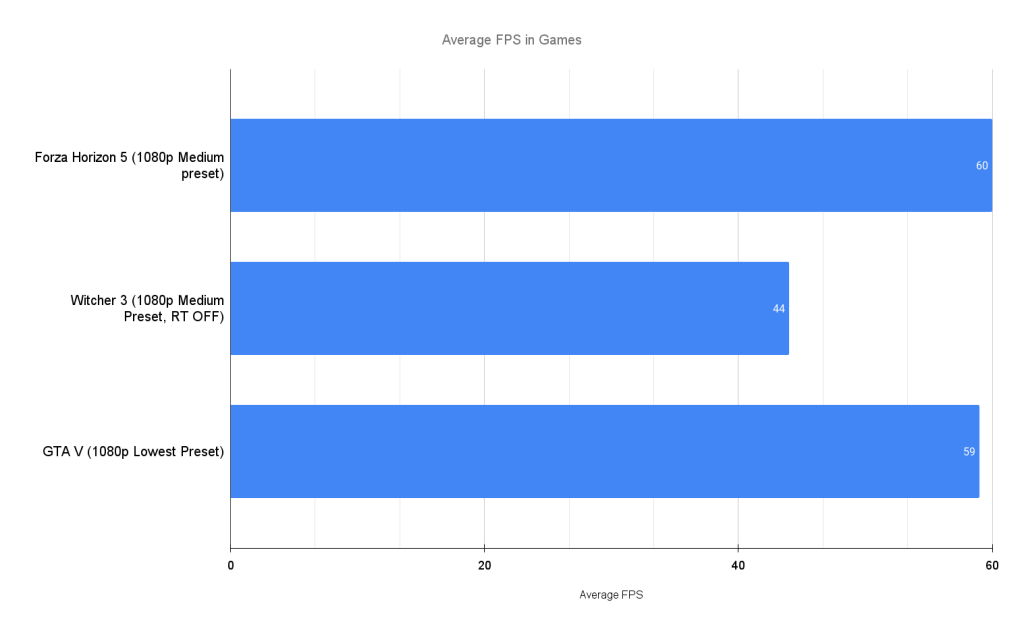
So as mentioned above, these benchmarks were performed with the Ally set in Performance Mode. This sets the processor to 15W of power when used without the charger. The other two modes are Silent Mode, which limits the process to 10W, and Turbo Mode, which sets the processor to 25W. All of these modes can be toggled between quickly via the overlay too.
During my review, I found that the Performance Mode was the best mode to run the Ally in when gaming on the go. It offers a good amount of performance without draining the battery too quickly. In Turbo Mode, the processor will be set to 25W, however I noticed that the performance improvement was minor and the battery drain was major. So I only switched to Turbo Mode when I was plugged in.
When set to Silent Mode, I noticed that performance was seriously affected and that the Ally could only play extremely light and simple games. Battery life was better though, and the fan noise was significantly lower.
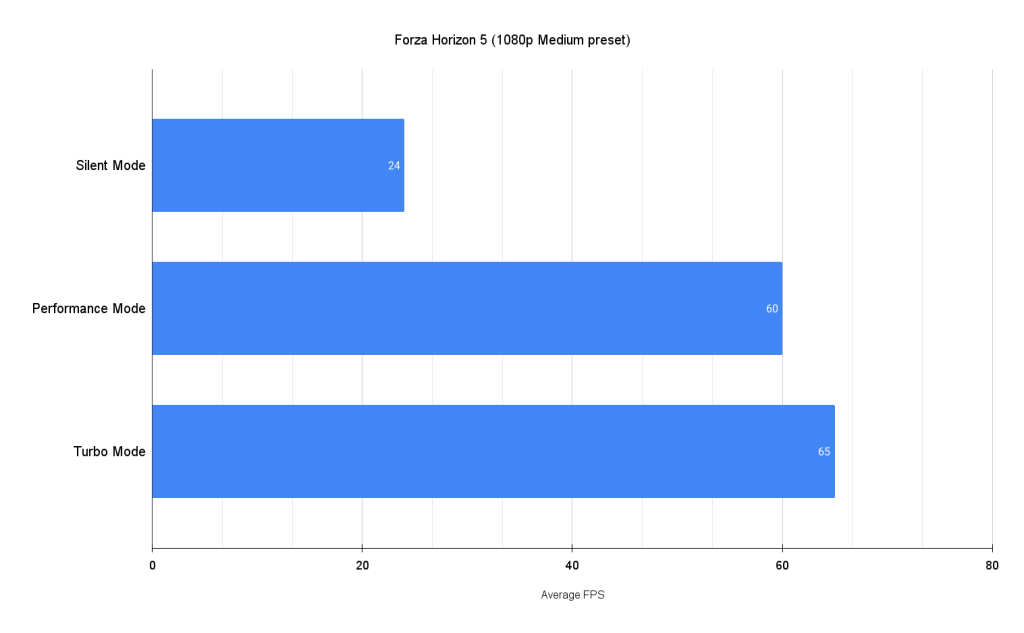
In the above chart, you can see how the Ally performs in Forza Horizon 5 in all three modes. The Performance Mode appears to be the most optimal setting for regular gaming-on-the-go.

Coming to the thermals, it looks like ASUS has done a good job with the Ally. The dual fans push a lot of air and can get quite audible when gaming. In Turbo mode especially, the fans run full blast and get loud. In Silent Mode, the fans stay quiet and in Performance Mode, there is a good balance between noise and temperature. The fans exhaust towards the top and away from you, so your hands stay comfortable. There were complaints online about the microSD card port being too close to the exhaust and causing the port to melt. ASUS has acknowledged the issue and has released a BIOS update to mitigate the issue, so it shouldn’t be an issue anymore.
Software

While the ROG Ally does run a full-fledged version of Windows 10, it does feature some custom software to improve the experience of being a handheld game console.
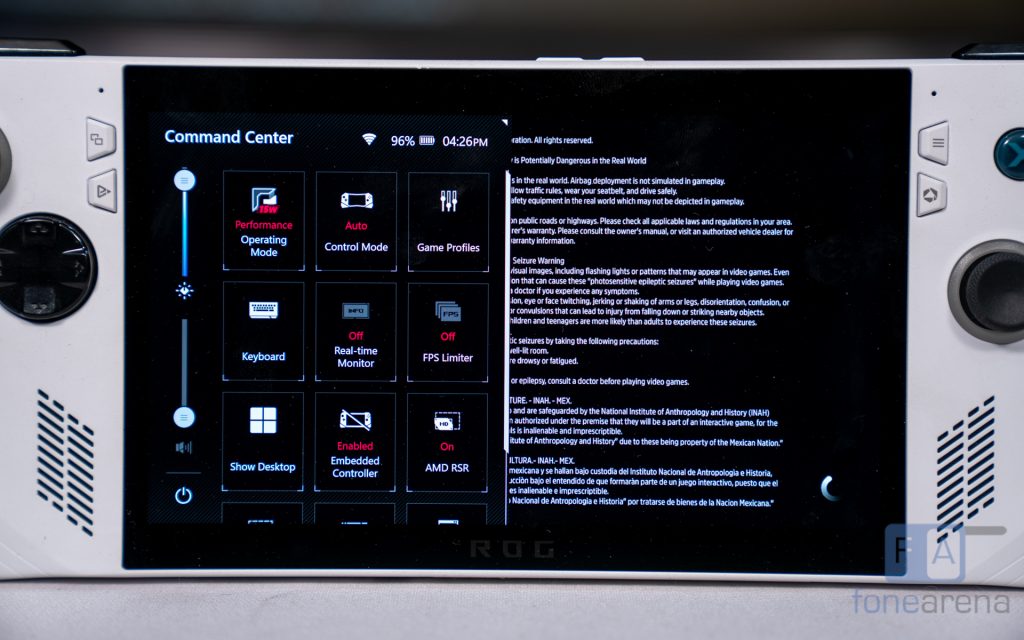
ASUS has created a new version of their Armoury Crate software that adds a lot of functionality to the Ally. It is designed for interfacing via the joysticks and touchscreens, and provides everything you need if you want to purely game on the Ally. There are quick access tiles to the games installed on the device, and there are tabs for Settings and Content. In the Settings tab you can access the Lighting controls, wireless connection settings, operating mode and customize the command center.
The Command center is an overlay that is accessible with a button on the top left edge of the display. In this overlay, there are quick settings tiles for changing the Operating Mode, toggling a Real-time Monitor, FPS Limiter, bringing up the keyboard, etc. I found the overlay to be super helpful when I needed to change some settings. However, there were times when the overlay just wouldn’t show up or refused to respond. ASUS clearly has to fix some bugs with this software and make it a lot more reliable.
There are rumours of Microsoft working on a version of Windows designed for handheld consoles. Hopefully this is true and Microsoft releases it soon, as it could really help the market grow.
Connectivity and I/O
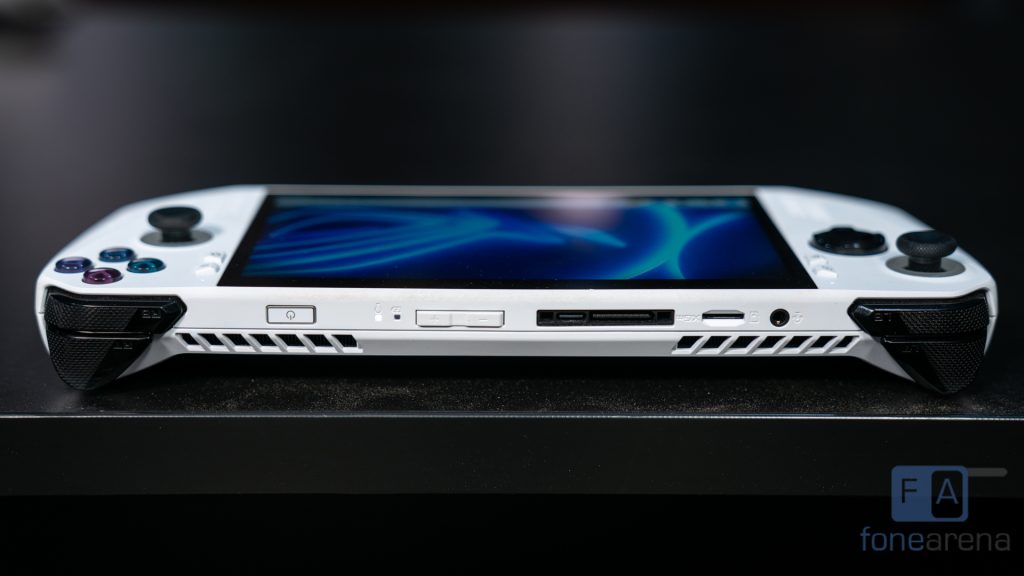
When it comes to ports, all of them can be found on the top of the device. There is a headphone jack, microSD card port, a ROG XG Mobile Connector along with a USB 3.2 Gen2x2 Type-C port with DisplayPort 1.4 support. I would have liked to maybe see another USB Type-C port, but it is not a deal breaker. Lastly, the power button also doubles as a fingerprint sensor, which works with Windows Hello for quick logins.
The XG Mobile Connector is really interesting as it enables users to connect an external GPU and massively improve the graphics capability of the ROG Ally. The XG Mobile is certainly expensive, but you get a fast GPU and a lot of ports, so it’s perfect for a portable PC solution.
Regarding wireless connectivity, the ROG Ally features support for Wi-Fi 6E and Bluetooth v5.2. Being a portable device, having good wireless connectivity is important. The ROG Ally performed well here and I did not face any drops in connectivity during my review.
Battery
For obvious reasons, battery life is an important aspect for the ROG Ally. The Ally comes with a 40Wh cell that is about the same size as the Steamdeck. This is a decent capacity considering the overall size of the ROG Ally.
The battery life however is a bit lower than I expected. It does vary depending on which game you’re playing, and in what power mode the device is set to. In lighter titles where the Silent mode can be used, the Ally will last a bit over 2 hours. In heavier titles where you need to turn on Performance Mode, the Ally will last you less than 2 hours and if you turn on Turbo Mode, then it will last you less than 1.5 hours.
Clearly long gaming sessions wouldn’t be possible without connecting the charger. You can make it through a short 2 hour flight or your daily commute without needing the charger. However, if you have access to a plug, you might need to keep it charged so that the battery is full for when you need to go portable.
Conclusion

For their first attempt at hand-held gaming, I have to say I am quite impressed with the ASUS ROG Ally. The future of portable Windows gaming has arrived and ASUS has put forward a strong product that performs well.
The design is good and the inputs are well thought out. The performance is impressive and thermals seem to be well managed. The display looks good and the software is promising, although it definitely needs some polish. The battery life could certainly be better, but its not a deal breaker. Overall, I think the ROG Ally is a great product.
At the price of Rs. 67,990, it does seem a little steep for a portable gaming device. Home consoles and the Nintendo Switch are much cheaper. However, if you consider that the ROG Ally is also a fully functioning computer that runs Windows, then I think the price is reasonable. So if you want to play PC games while on-the-go, then the ASUS ROG Ally is a legitimate option that you should consider.
